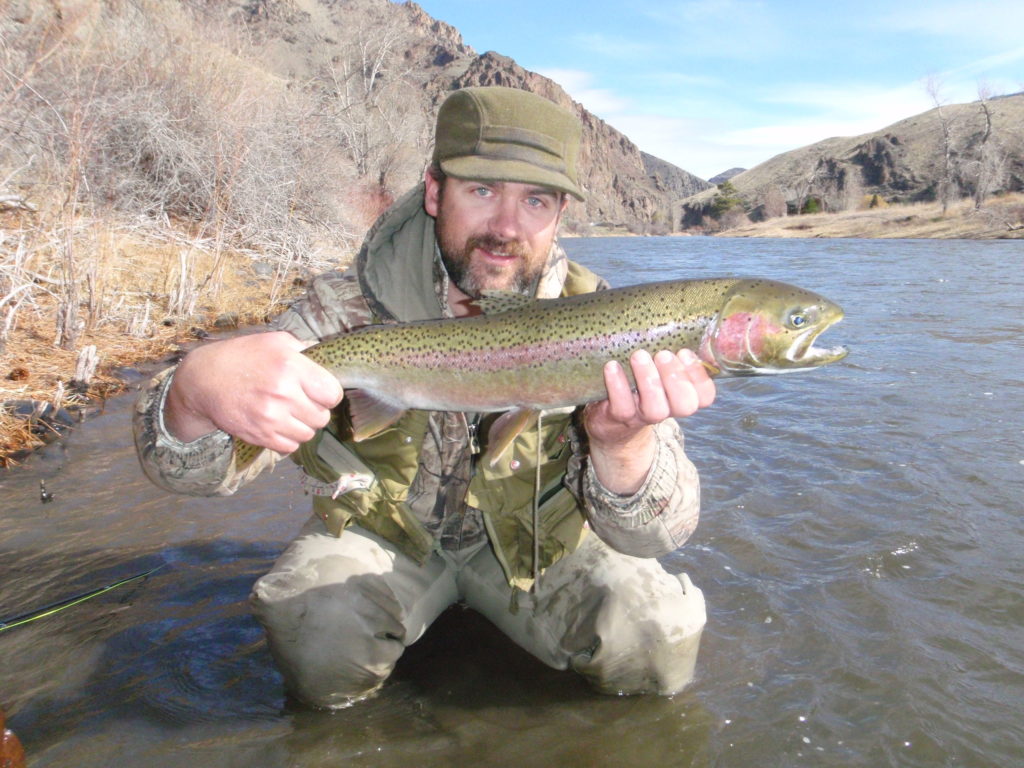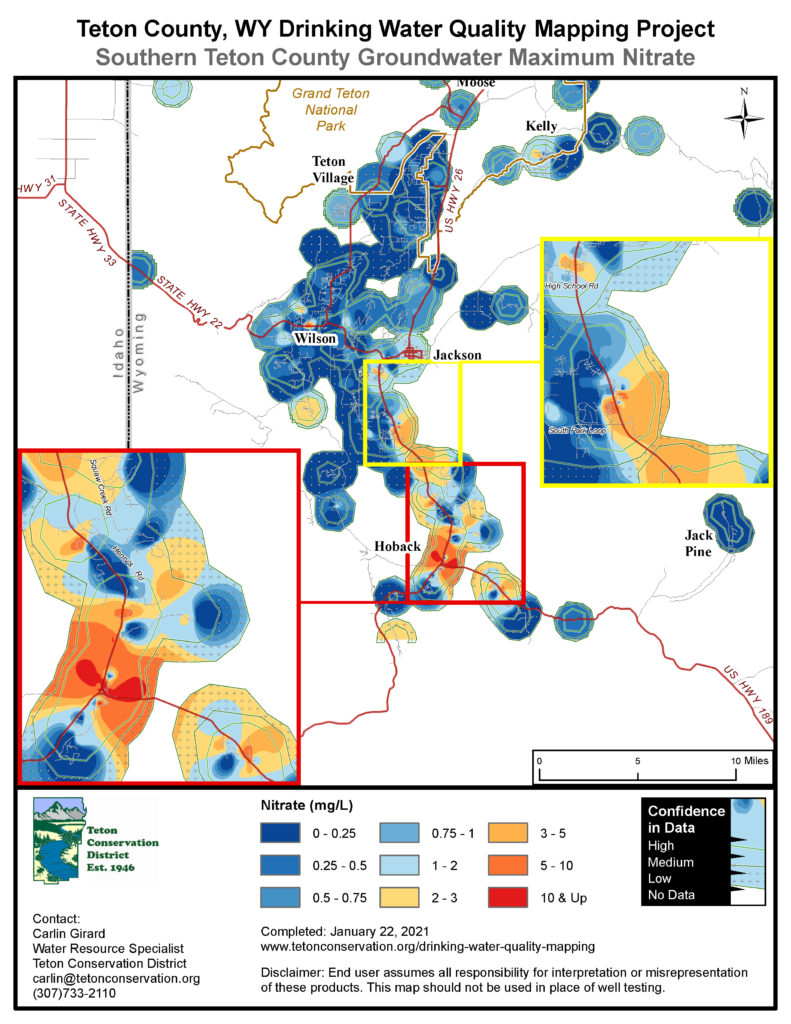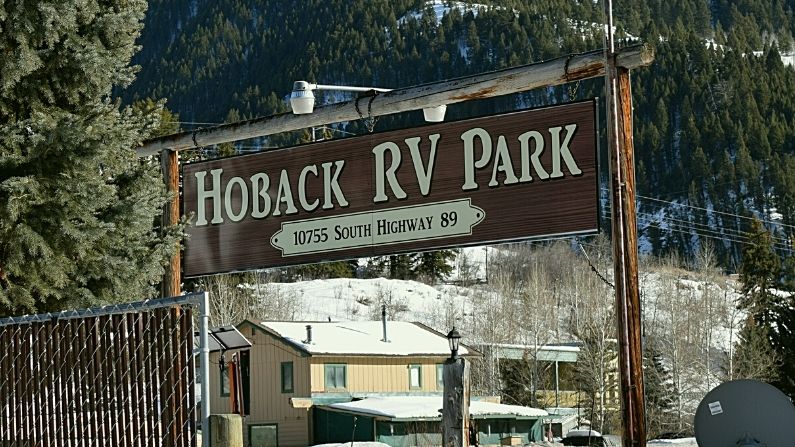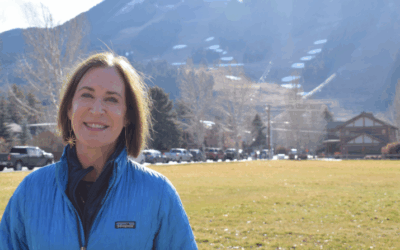In Hoback Junction, locals have had concerns about the quality of their drinking water for a long time. Residents of the Hoback RV Park, including Jefferey Meehan, spoke publicly back in December about it.
“We haven’t had laundry. We haven’t had potable water here for six months,” he said. “Nothing was done in terms of any sort of offset for that.”
The water quality in Hoback has gotten so bad that residents of the park are being forced out by landowners, largely because of non-compliant septic systems that violate several environmental standards. The main concern is nitrate pollution, the adverse effects of which are explained in a video from the Environmental Protection Agency.
“Nutrients like nitrogen and phosphorus are a natural part of the ecosystem,” the video explains. “They support the growth of aquatic plants. But human activities cause an excess of nitrogen and phosphorus in the environment. Surfacing groundwater becomes polluted.”
Nitrates are forms of dissolved nitrogen. Consuming them at high levels can be harmful to respiratory and reproductive systems, and it can also be dangerous for fetuses and infants, according to the Water Education Foundation. Treating it, as has been done in Hoback for years, can cost hundreds of thousands of dollars. And while the contamination there has long been well-documented, a comprehensive data set outlining the state of drinking water across Teton County hasn’t really existed—until this year.
Enter the Drinking Water Quality Mapping Project and Carlin Girard.
“In a way, this is not a snapshot in time at all. It’s a snapshot in history,” Girard said.

Carlin Girard has worked for the Teton Conservation District for six years, prior to which he studied water quality and aquatic habitats as a master’s student at the University of Wyoming. (Courtesy of Carlin Girard)
Girard is one of the foremost experts on water quality in Teton County. For the past two years or so, he’s been using samples from private wells and public water systems to clearly map out water quality countywide. The final project was published earlier this year and Girard presented his findings to the Teton County Board of County Commissioners in early March.
Each map in the project provides a detailed snapshot showing exactly where pollutants have affected drinking water over the past 25 years or so (depending on data availability), sorted by their concentration. But Girard didn’t just map out nitrates. He tracked seven other indicators, like fluoride, sulfate, and pH levels. Nitrate is the factor that most likely reflects back on humans impacting natural resources, Girard said, but the other factors mapped in this project, which occur more naturally, also impact the county.
“I also think plumbers who install water treatment systems could benefit from this,” Girard said, listing examples of who the project might benefit. “For real estate agents, during real estate transfers, this is a great way of getting a window into issues their clients may potentially be running into.”
Girard also said gardeners could use his maps to find out why certain crops grow better than others in certain locations. He’s sent dentists his fluoride map and medical professionals his nitrate map. In essence, Girard calls the project a sort of public utility.
“It felt as though I was the wrong person to have this data in my head,” he said. “A lot of the problems seem to stem from broader, kind of systematic failures that are outside of my control.”

The Teton County, Wyoming, Drinking Water Quality Nitrate Map. (Courtesy of the Teton Conservation District)
Looking at the nitrate map, it’s clear that Hoback is the reddest area in Teton County, with levels that violate EPA standards in several locations. However, the South Park service center is another area of concern for Girard, as well as Kelly and Alta.
“Seeing that there were small kind of hotspots in almost all of the small satellite communities that really operate on septic systems…was also a pretty interesting observation that I kind of had in my head,” he said. “We’re not entirely sure where nitrate originates from, but when you start to overlay it with these other factors, you start to get a little clearer picture that maybe wastewater really is influencing our groundwater.”
Girard said the mapping project simply represents what’s currently happening with drinking water. Figuring out why is the next step, and then how we fix this. It’ll take a long time for the county to undo what’s already been done, but one thing that could change immediately is how local residents think about what comes out of their taps.
“I want this mapping effort and I want our kind of increased emphasis on water quality to also bleed through into our personal behaviors,” Girard said. “Recognizing that, if you put a bottle of pharmaceutical drugs down your drain, that goes into our drinking water or our surface waters.”
Luckily, Girard said the issue is getting the attention it deserves. At least one Teton County Commissioner, Luther Propst, said in December that he ranks water quality as one of his top priorities.
“Hoback is just the tip of the spear, and if we don’t better regulate our nitrate—if we don’t better manage nitrate to septic tanks through the two packing plants, through livestock and wildlife management—if we don’t take it more seriously, we’re going to see more Hobacks,” Propst said.
At least with the new mapping project now in hand, both commissioners and Teton County residents are armed with more data to inform how we manage our water resources moving forward.
Editor’s Note 3/11: A previous version of this article listed the West Bank of the Snake River as an area of concern for nitrates. This is untrue, as nitrate levels remain stable there, according to recent data. The South Park service center, Alta, and Kelly remain areas of concern. A previous introduction in the audio story also listed “lightly regulated sewer systems” as a local issue for environmental watchdogs. While this is true, we’ve updated the introduction to better reflect the rest of the story, which addresses septic, rather than municipal sewer systems.






